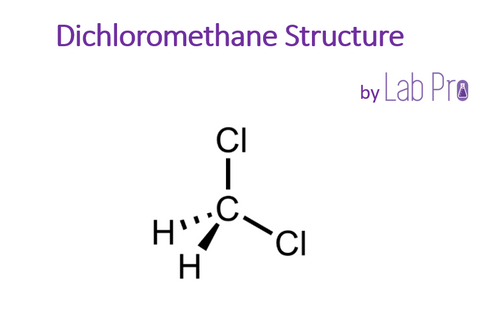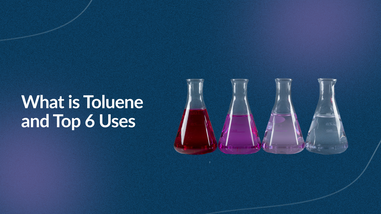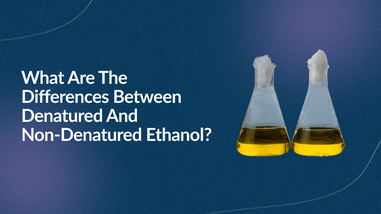- No products in the cart.
Chemistry is a captivating realm where the properties and behavior of substances are deciphered at the molecular level. One such intriguing compound is dichloromethane, also known as methylene chloride. Its unique molecular structure and properties make it an essential player in various industries, and its interactions with other compounds have fascinated chemists for decades. In this blog post, we will embark on a journey to explore the chemistry behind dichloromethane, shedding light on its properties, molecular interactions, and its pivotal role as a solvent.
The Molecular Dance: Structure and Properties
Dichloromethane (CH2Cl2) (or Methylene Chloride) is a simple organic compound composed of carbon, hydrogen, and chlorine atoms. Its molecular formula hints at a linear arrangement, with two chlorine atoms flanking a central carbon atom. This molecular structure, however, belies the intriguing properties that dichloromethane exhibits.
One of the most notable features of dichloromethane is its polarity, or lack thereof. The electronegativity difference between carbon and chlorine is not significant enough to create a highly polar molecule. Consequently, dichloromethane is a polar aprotic solvent, meaning it can dissolve both polar and nonpolar compounds. This unique property finds application in various chemical processes and experiments.

The Role of Dichloromethane as a Solvent
In the realm of chemistry, solvents are akin to facilitators, enabling reactions and interactions between different compounds. Dichloromethane's ability to dissolve a wide range of substances makes it an invaluable solvent in numerous applications.
Organic chemists often employ dichloromethane to carry out reactions that involve both polar and nonpolar reactants. Its nonpolar nature allows it to dissolve nonpolar compounds like hydrocarbons, while its polar attributes make it suitable for dissolving polar compounds like salts. This versatility opens doors to synthesizing a plethora of organic molecules.
Furthermore, dichloromethane is frequently used in liquid-liquid extractions to separate compounds from complex mixtures. Its selective solubility helps chemists isolate specific components and purify substances. However, it's important to note that while dichloromethane's solvent properties are invaluable, its volatile nature and potential health risks have led to efforts to find safer alternatives.
Molecular Interactions in Dichloromethane
The dipole moment in dichloromethane gives rise to a variety of molecular interactions. These interactions include:
- Dipole-dipole interactions: The dipoles in the dichloromethane molecules interact with each other, causing the molecules to be attracted to each other.
- London dispersion forces: These are weak, temporary forces that arise from the random movement of electrons in the dichloromethane molecules.
- Hydrogen bonding: The hydrogen atom in the dichloromethane molecule can form hydrogen bonds with the oxygen atoms in other molecules.
Environmental Considerations and Alternatives
While dichloromethane's chemistry and properties offer remarkable benefits, its environmental impact cannot be overlooked. It is a volatile organic compound (VOC) that contributes to air pollution and poses potential health risks to humans. As a result, there have been efforts to find safer alternatives in various applications.
Researchers and industry professionals are exploring the use of greener solvents that possess similar or improved properties compared to dichloromethane while being less harmful to the environment and human health. Solvents like supercritical carbon dioxide and ionic liquids are gaining prominence as potential substitutes. These alternatives present exciting avenues for sustainable chemistry, where the benefits of dichloromethane's chemistry can be harnessed without the associated drawbacks.
Safety Precautions
Dichloromethane is a hazardous substance and should be handled with care. It is a carcinogen and can cause liver damage, kidney damage, and neurological damage.
Dichloromethane should be stored in a cool, well-ventilated area. It should be kept away from heat and open flames. When working with dichloromethane, it is important to wear gloves, eye protection, and a respirator.
Conclusion
Dichloromethane, with its deceptively simple molecular structure, unfolds a captivating tale of chemistry, properties, and interactions. Its dual nature as a polar aprotic solvent paves the way for a myriad of applications in organic synthesis and separation processes. Beyond its solvent role, dichloromethane's interactions with other compounds offer insights into molecular behavior, influencing reaction pathways and spectroscopic analyses. However, its environmental impact underscores the importance of seeking greener alternatives that preserve the benefits of dichloromethane's chemistry without compromising the well-being of our planet and its inhabitants. As chemistry advances, the story of dichloromethane continues to evolve, reflecting the dynamic interplay between scientific exploration, innovation, and sustainability.
For over 40 years, Lab Pro Inc. has been committed to delivering highest quality chemicals, lab supplies, hand tools, lab equipment, reagents, distance learning kits, and cleanroom PPE apparel. Renowned by global medical device companies and laboratories, we ensure exceptional quality in every product. Contact us online or call 888-452-2776 to learn more. Discover top-notch lab supplies and elevate your experiments today!












































